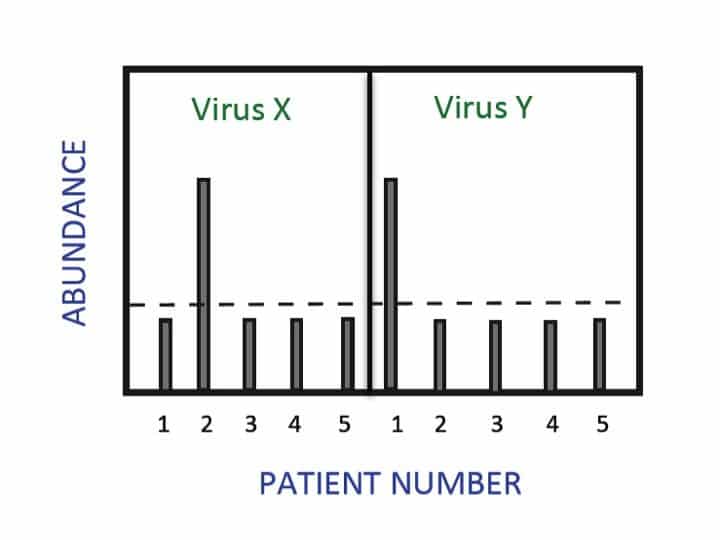Digital PCR (dPCR) is a quantitative PCR method that provides a sensitive and reproducible way of measuring the amount of DNA or RNA present in a sample. This method is similar to qPCR in the reaction assembly components and amplification reaction, but differs in the way the sample target is measured. Digital PCR is a simple and reproducible method that does not rely on a calibration curve for sample target quantification. No reference standards or endogenous controls are needed. For dPCR, the initial sample mix is partitioned into a large number of individual wells prior to the amplification step, resulting in either 1 or 0 targets being present in each well. Following PCR amplification, the number of positive vs negative reactions is determined and the absolute quantification of target calculated using Poisson statistics.
Digital PCR is a powerful method the advantages of which include: improved rare allele and CNV detection, accurate NGS library quantification, increased sensitivity for detecting target in limited clinical samples and improved multiplexing capability.
Here’s how dPCR works
The initial dPCR reaction is assembled using the same reaction components as those used in qPCR. The subsequent step partitioning the sample reaction mix into a large number of individual wells is unique to dPCR. The method relies on the assumption that sample partitioning will follow a Poisson distribution resulting in 0 or 1 target per well. Upon completion of sample partitioning, PCR amplification reactions are run to endpoint. The presence or absence of fluorescence in the amplified reaction wells is then used to calculate the absolute number of targets present in the original sample. Wells with fluorescent signal are positives and scored as “1”; wells with background signal are negatives and scored as “0”. Poisson statistical analysis is then used to determine the absolute concentration of target present in the initial sample.
Step 1 – The initial reaction is assembled in a single tube using the same components as qPCR
Step 2 – Assembled reaction is split into a large number of individual wells resulting in either 1 or 0 targets/well.
Step 3 – PCR amplification is performed to endpoint
Step 4 – Absolute quantification of target molecules is calculated using Poisson statistical analysis
Applications showing improved results using dPCR
Digital PCR has been shown to be advantageous for applications requiring high sensitivity, accurate quantification, reproducible quantification and improved multiplex capability.
- Rare allele detection
- Copy number variation
- Pathogen detection
- Quantification of Next-Generation sequencing libraries
- Gene expression heterogeneous samples
- Multiplexing
- Viral load detection
Commercially available dPCR systems
Raindrop™ Digital PCR System (Raindance™ Technologies
QX200™ Droplet Digital™ PCR System (Bio-Rad)
BioMark™ HD System and qdPCR 37K™ IFC (Fluidigm Corporation)
QuantStudio™ 3D Digital PCR System (Life Technologies™)
Make sure digitial PCR is the right choice for you by comparing Digitial PCR with Quantitative Real-Time PCR.
Recommended References
Huggett, JM and Whale, A (2013) Digital PCR as a Novel Technology and Its Potential Implications for Molecular Diagnostics. Clinical Chemistry 59: 1691–1693.
Sedlak, RH and Jerome, KR (2013) Viral diagnostics in the era of digital PCR. Diagn Microbiol Infect Dis. 2013 January; 75(1): 1–4. doi:10.1016/j.diagmicrobio.2012.10.009.
Laurie, MT et al. (2013) Simultaneous digital quantification and fluorescence-based size characterization of massively parallel sequencing libraries. BioTechniques 55:61-67 (August 2013) doi 10.2144/000114063
Shuga, J et al. (2013) Single molecule quantitation and sequencing of rare translocations using microfluidic nested digital PCR. Nucleic Acids Research, 2013, Vol. 41, No. 16 e159 doi:10.1093/nar/gkt613
Whale, AS et al. (2013) Methods for Applying Accurate Digital PCR Analysis on Low Copy DNA Samples. PLoS One 3: e58177
Has your laboratory tried digital PCR? If so what have been the advantages & disadvantages involved?






